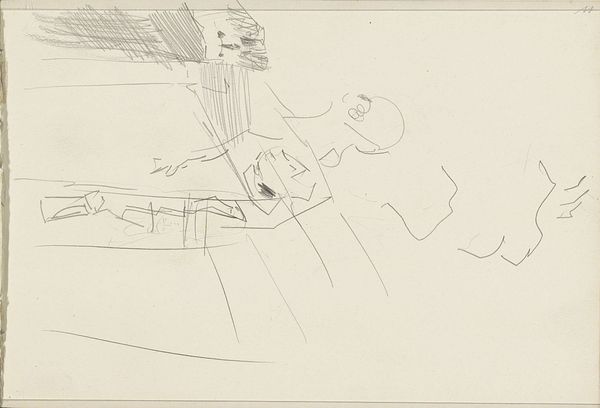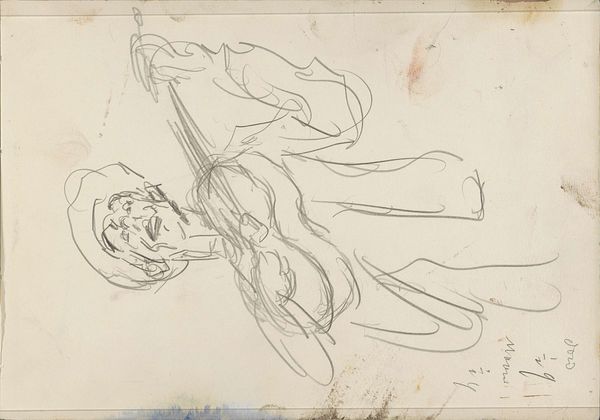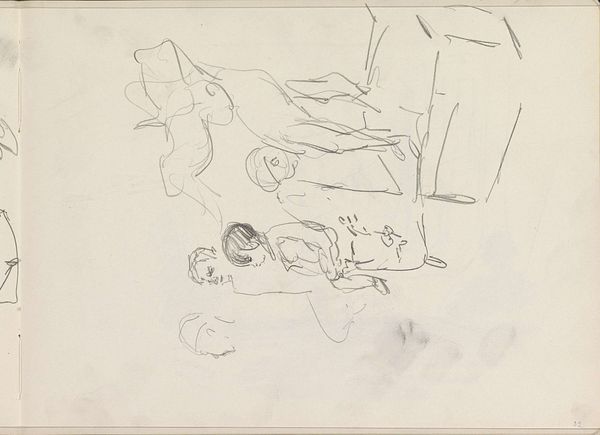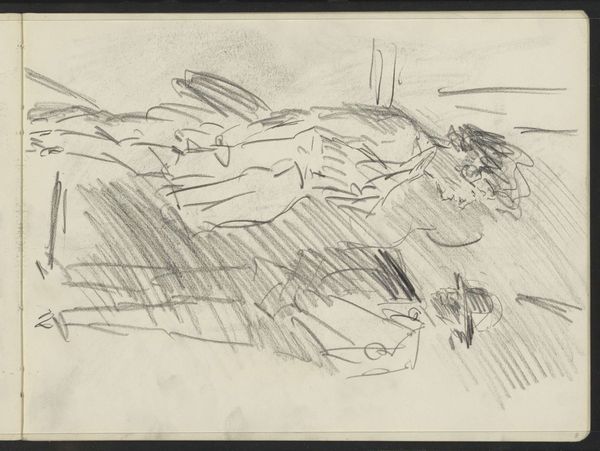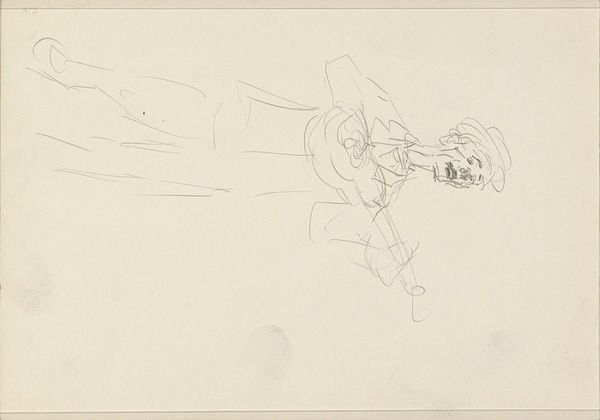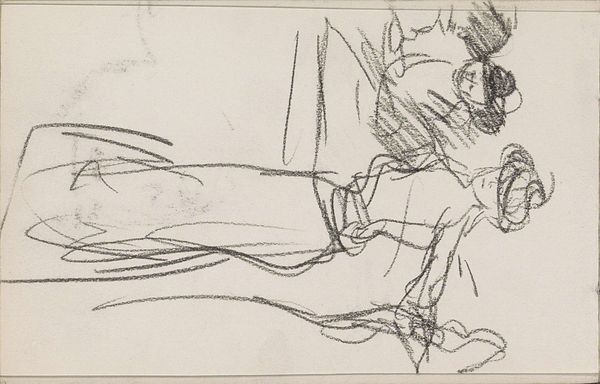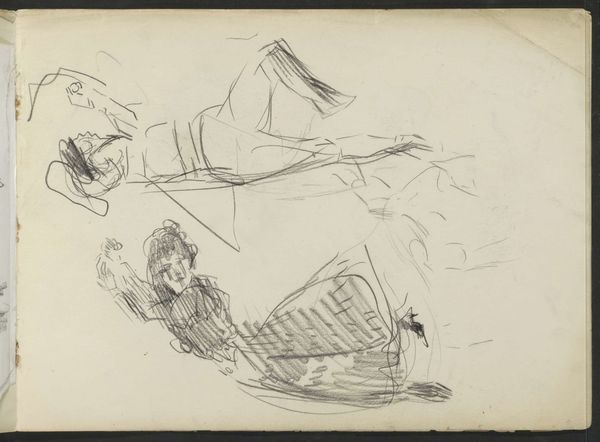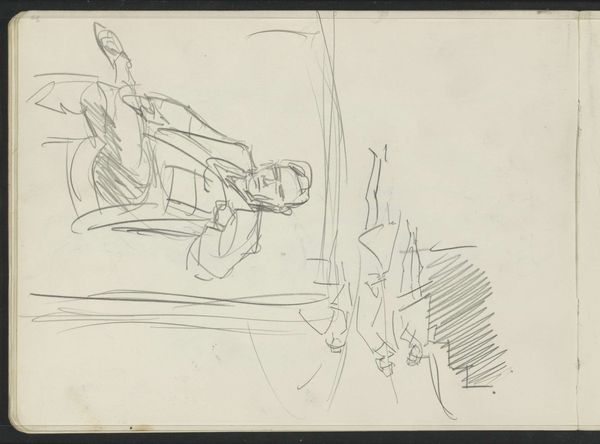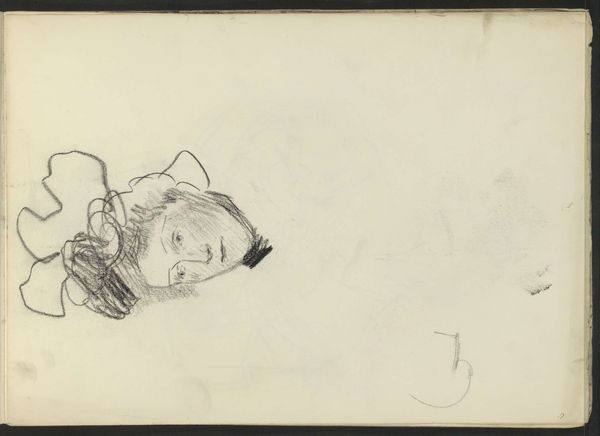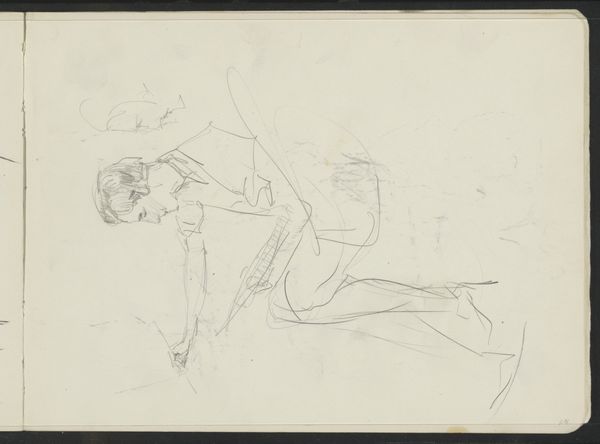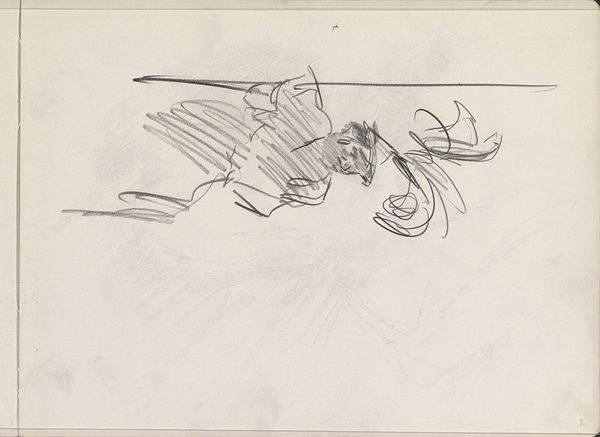
drawing, pencil
#
portrait
#
drawing
#
amateur sketch
#
quirky sketch
#
incomplete sketchy
#
figuration
#
personal sketchbook
#
idea generation sketch
#
sketchwork
#
ink drawing experimentation
#
pencil
#
sketchbook drawing
#
genre-painting
#
sketchbook art
#
initial sketch
Copyright: Rijks Museum: Open Domain
Curator: This drawing is called "Gitaarspeler met hoed op een toneel," or "Guitar Player with Hat on a Stage," sketched by Isaac Israels around 1930-1934. It's currently held in the Rijksmuseum collection. What’s your initial reaction? Editor: My first thought is that it feels very spontaneous, almost ephemeral. The light pencil strokes give it an airy quality, as if capturing a fleeting moment in a dimly lit performance space. There's an incompleteness that suggests it's more about capturing the essence of the musician than a precise depiction. Curator: I agree. Israels was known for capturing scenes of modern life, especially in the entertainment world. This drawing gives us a peek behind the scenes, possibly a performer during rehearsal. These kinds of artworks help art historians to consider art through social and institutional history. Editor: The figure's hat immediately strikes me. It creates a sort of anonymity, almost masking his personal identity to let him transform himself. The tilted angle adds a playful touch, and is a symbol for a relaxed style. It also draws the eye upwards toward a state of performance. Curator: Yes, the hat could signify performance and spectacle, but it also connects him to the world of cabaret and music halls, which, in the interwar period, were vibrant, sometimes subversive, social spaces. These pencil and ink sketches acted as cultural commentators in that period. Editor: Indeed. His elongated fingers and the position of his hand on the guitar create a symbolic union, of player and instrument, showing a dynamic energy that suggests the imminent burst of sound and passion. He seems almost merged with his guitar, projecting character as he plays his instrument on stage. Curator: It's interesting you point out that relationship because, during the rise of popular entertainment, performers occupied a unique position in society, their images carefully managed, their talent both celebrated and scrutinized. We must appreciate the place where he would have worked at the time. Editor: Absolutely, the performance captures elements of escapism and raw emotive expression through carefully deployed signs. This simple sketch then, acts as a poignant insight into cultural memory. Curator: It gives insight not only on what art was produced at the time, but where society directed its resources. It is important that the social implications behind art are not overlooked, lest they be destined to be repeated in history. Editor: I find that this artwork is a poignant reminder of the enduring allure of music, and a glimpse into the relationship that we have with the performance.
Comments
No comments
Be the first to comment and join the conversation on the ultimate creative platform.
